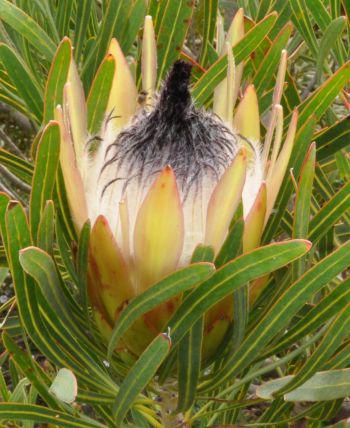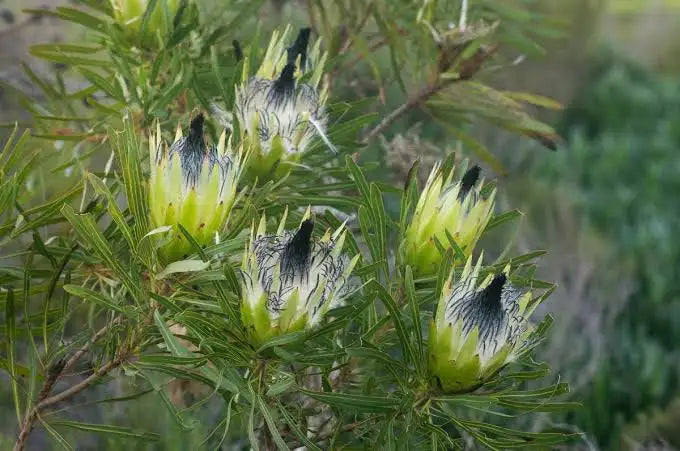Protea longifolia
Protea longifolia
Couldn't load pickup availability
Protea longifolia, commonly known as the long-leaf sugarbush, is a distinctive South African shrub of the family Proteaceae. Native to the southwestern Cape Provinces, it is known for its long, narrow leaves and unique flowers with black, woolly centres. It is also known as a "promiscuous protea" because it frequently hybridizes with other protea species in the wild.
- Leaves: The scientific name longifolia refers to the plant's leaves, which are up to 20 cm long and only about 1 cm wide.
- Flowers: The flower heads are made up of hundreds of individual flowers and are topped by a dense, pointed cone of black hair. The bracts surrounding the flower head are typically white, pink, or green. Flowering occurs in winter and spring.
- Form: It is a low-growing, sprawling shrub that rarely exceeds 1.5 metres in height. Its branches are relatively weak, causing the bush to often be wider than it is tall
- Native range: Protea longifolia is endemic to the Western Cape Province of South Africa, where it grows in sandstone and ferricrete fynbos.
- Location: Its range extends from the Kogelberg to the Agulhas Plain.
- Elevation: It is typically found in lowland areas.
- Growing conditions: Protea longifolia is easy to grow in well-drained, acidic soil. It prefers full sun and is drought-tolerant once established. Like other proteas, it is sensitive to phosphorus.
- Propagation: It can be grown from seed, which should be sown in autumn, or from cuttings.
- Landscaping: It is an excellent choice for a fynbos garden, particularly where a lower, spreading shrub is desired.
- Cut flowers: While the true species is not a major cut flower, its hybrids are widely used by florists.
- Pruning: The plant responds well to pruning after flowering to encourage new growth and maintain a compact shape.
Price is for 5 seeds


Collapsible content
Fair Use Disclaimer
Our website may contain content not authorized for use by its owner but use of this material falls under the guidelines of fair use (They are for educational purposes only to show the plant only).
If you want to find our more or own any images displayed on our website and disagree with our assessment it constitutes 'fair use' please click here.


